A little while back I shared our love of water kefir as a simple way of adding locally cultured probiotics to our diets (as well as enjoying a tasty drink!) but my dabbling in the world of homegrown 'friendly' bacteria started a good few years back when an Indian friend showed me how to make (or significantly increase my quantity of) yoghurt. I was instantly hooked on the satisfyingly magical process of turning a couple of hundred grams of yoghurt and a litre of soya milk into; behold! A litre of thick, creamy, delicious, vegan yoghurt.
| I'm not sure if it counts as 'cooking' or 'homegrown', perhaps it shuffles about surreptitiously in the Venn diagram segment between those and 'fermentation' but how ever you categorise it, it's an easy way of making expensive yoghurt stretch a little further whilst reducing your plastic consumption at the same time. I have known friends who use sachets of dried culture to start their yoghurts, which of course reduces packaging even further but to be honest I've never been a fan of the results, which seem to need straining through muslin to be anything thicker than drinking yoghurt. I can make a 400g tub of yoghurt and three litres of soya milk produce enough to last us about three weeks, and that's with us both having a large spoonful with breakfast almost every day and the occasional dessert serving, so I'm fairly happy that I've minimised the plastic I'm putting in to the recycling enough to justify having the yoghurt I enjoy! Over the years I've been experimenting with it, I've also learned a bit and whittled down the products I use to firm favourites. I have played about with other kinds of milk but I've got to admit I'm really just all about the soya. I know it gets a bad rap for various reasons and it's so out of fashion these days that many cafés don't even offer it any more... |
But I became vegan in the 90's, when soya milk was a rare, radical thing even if it was really foul and I guess I just acquired that taste young! As far as farming goes, I choose a brand that sources non GMO beans from France and I've never experienced any hormonal imbalance that I attributed to my (fairly minimal) soya consumption, so... I stand by good old fashioned milk made from 100% soya and water! I've found fhat brands using stabilisers, thickeners and flavourings just don't make the nice, thick yoghurt I prefer and anyway quite frankly I'd rather not ingest that stuff if possible. It seems to me that a lot of the plant based milks widely available these days are so full of other things (I mean, great, British grown oats, but who wants to drink rapeseed or sunflower oil!?) that it pretty much counts as processed food. Not great, really. However, plant milk rant aside (it's probably still better for you than dairy, in my opinion) for the purpose of yoghurt making I have discovered that you definitely want to pick both yoghurt starter and milk products that minimise additives if you're aiming for thick yoghurt. If you're mostly using your yoghurt to make lassi or smoothies and don't mind it runny, you can afford to be a bit less discriminating!
| That's the preamble. This is how to make yoghurt! First, you'll need a glass jar that can stand being sterilised with boiling water (yes, I've killed a few that couldn't!) and is large enough to contain the quantity of yoghurt you want to make. You'll also need a method of gently heating the milk to about blood temperature, that's roughly when it doesn't feel cold on your (clean!) finger. A saucepan on the stove will do, or you can microwave it. To my delight I've recently learned that I can get a whole unopened carton to temperature just by leaving it on the storage heater for a couple of hours! Less energy used and less washing up, hooray!! You don't want it too warm though, or you'll kill the bacteria that make the yoghurt, just as you sterilise the jar with heat to make sure that's the only bacteria you'll be cultivating! Once you've got a reasonably sterile jar (I put mine in the sink and pour a full, freshly boiled kettle into it, making sure to let it flow over the rim and sides.) pour your warm/tepid milk in and then add roughly a third of a tub of your starter yogurt. You'll then need to keep the whole thing warm for a good few hours by tucking it up, preferably in some sort of thermal bag, with a hot water bottle and some blankets. I usually put mine in before bed to have it in the morning, or first thing in the morning to be ready to put in the 'fridge before bed. This is all a bit hit and miss of course, depending on the ambient temperature and it definitely never needs as long to set a full litre in the summer as in the winter. I think six to eight hours is a pretty good bench mark; however. |
| Whatever the timing, you'll know it's done when the the contents of the tilted jar stays put! (see image!) I normally find I then need to gently pour some watery fluid off the top, though I suppose you could stir it in... But did I say, I like it thick!? Congratulations, you have made yoghurt! It'll be ready to eat there and then, though personally I prefer it when it's had a chance to chill in the refrigerator as there's often a little more liquid to pour off and it sets further when it's cold. So there you have it! No fancy yogurt making kit required and no complicated ingredients, as long as you can source the 100% soya stuff. One of the big name supermarkets used to make an own brand soya yoghurt without additives, but sadly it seems to have been discontinued to make way for the new favourites, all with flavourings, thickeners and other random stuff! Thankfully most local health food shops stock this stuff, and as I said you can make it work with additive laden stuff, it just won't be quite as rich and creamy as it might otherwise be! |
Incidentally, if you're thinking 'surely, if you make yoghurt from yoghurt, once you have yoghurt... You don't need to buy more yoghurt', yeah, that's what I thought but it doesn't really work too well. If I'm desperate and I'm not going to be able to source more starter, I'll pour half a litre or milk into the last third of my original litre of yoghurt, and that'll do. But it seems that over time the strength of the culture wanes and I've never had success with that strategy over time. So, this is basically a method for increasing yoghurt. If you know of a way to keep a culture self sufficient indefinitely, please let me know in the comments!
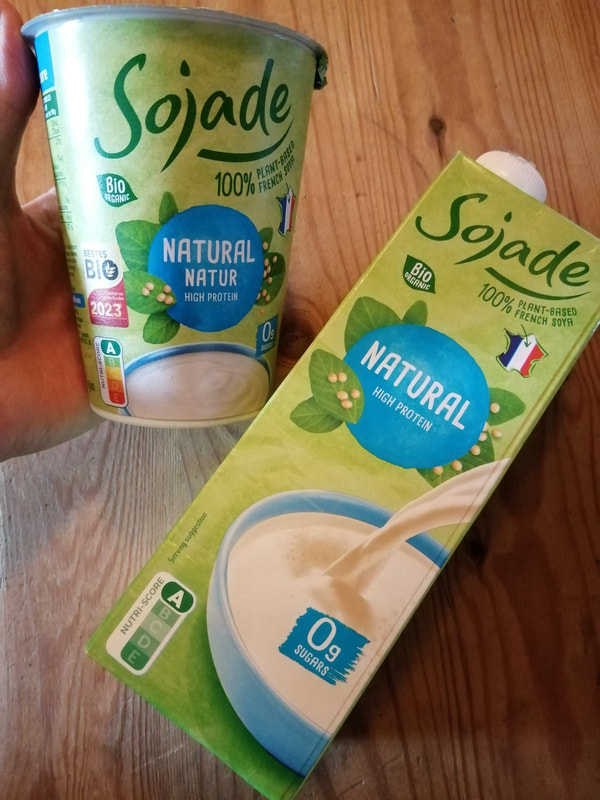
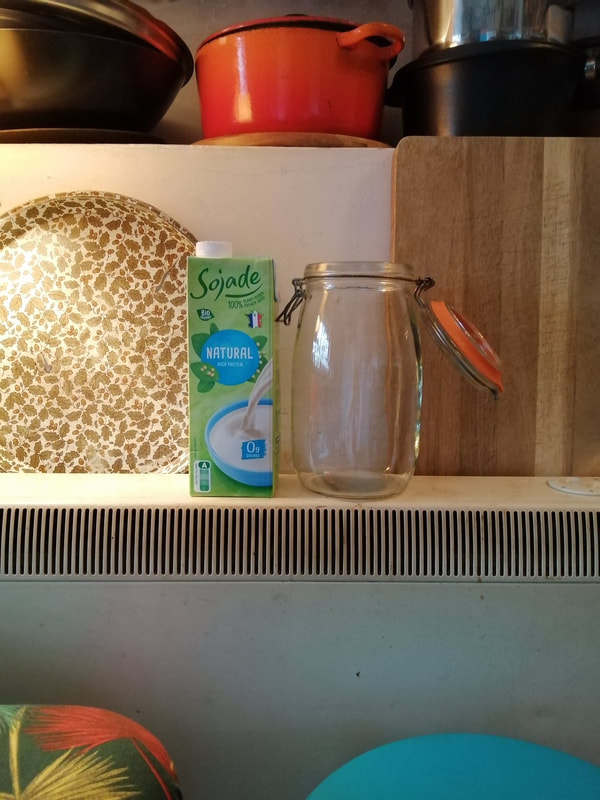
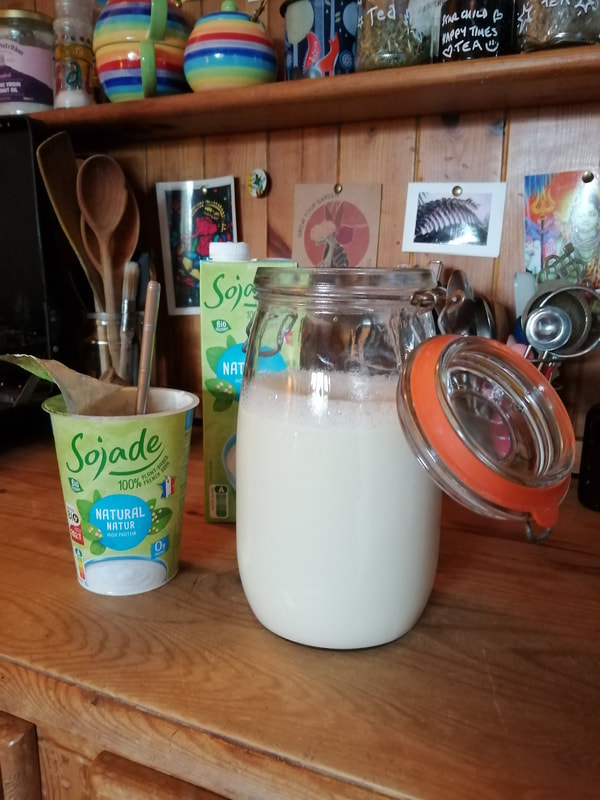
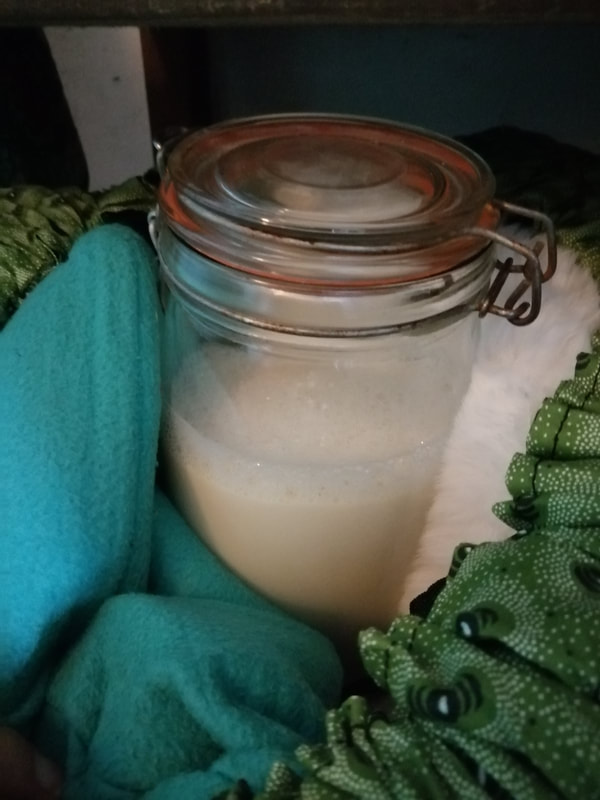
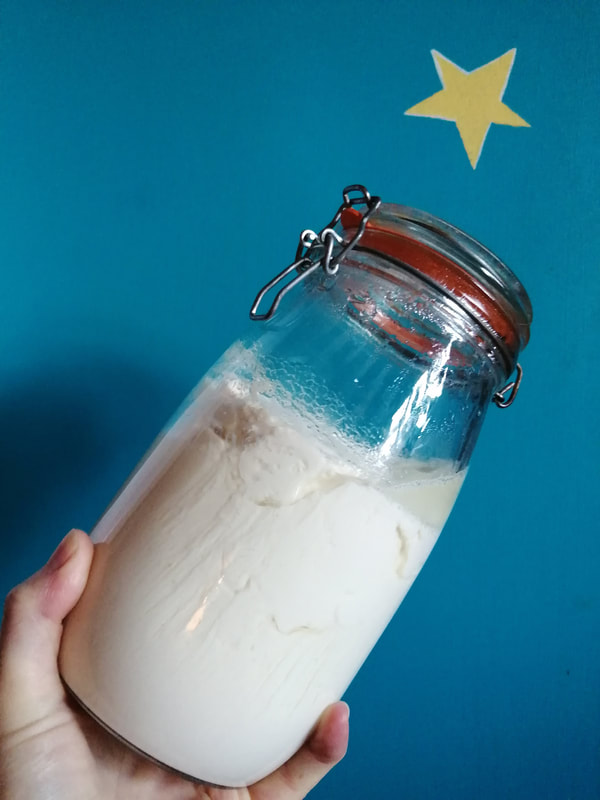

 RSS Feed
RSS Feed
